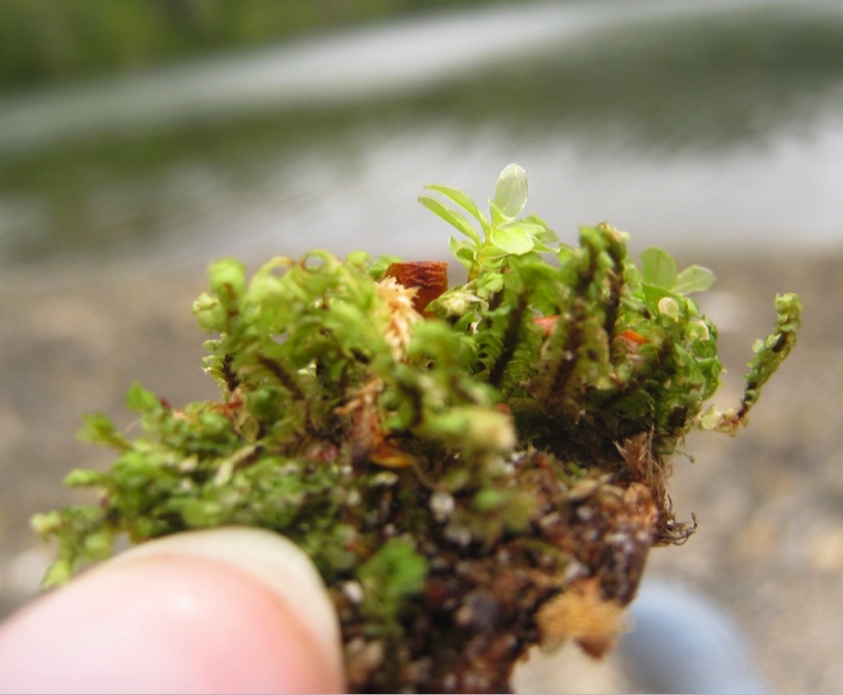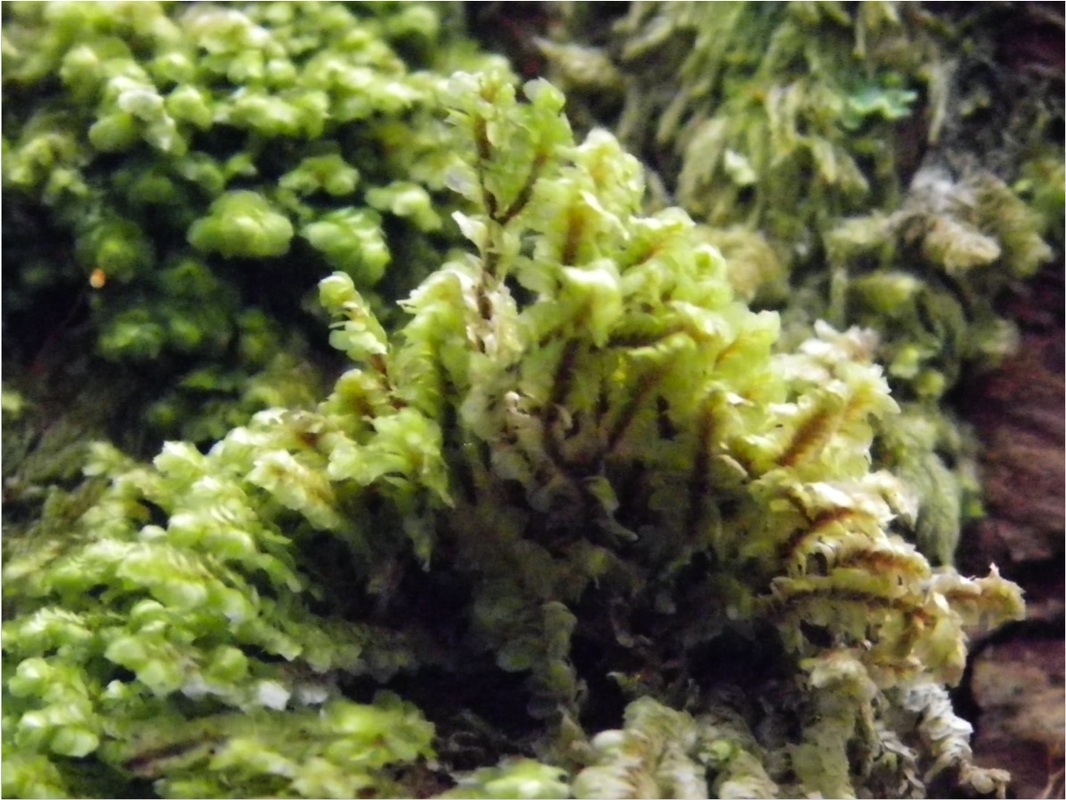Yellow-ladle liverwort • Scapania bolanderi
Identification
The yellow-ladle liverwort has yellow-green to light green plants. Shoots stand upright to 1-5 cm, are unbranched or occasionally irregularly branched. and form mats or cushions. The flattened leaves are relatively large (1.5-2.5 mm long) and overlap like reverse shingles. There are no underleaves on the ventral side; the lateral (upper) leaves are toothed and divided into two oval-shaped lobes which are folded together. See the UBC Bryophytes course species page for more detailed identification information and microscope photos. Sporophytes are only present for a small amount of time.
Habitat & Range
This liverwort grows in mats or cushions on decomposing wood such as stumps and logs and epiphytically on the trunks of large cedar, hemlock, and Douglas-fir trees. It is less commonly found on soil in wet, boggy areas.
Similar Species
This is the most common Scapania species in coastal BC, and is most likely to be found on trees stumps, and logs. Common fold-leaf liverwort (Diplophyllum albicans) is also common; it has longer, thinner leaves and is usually found on rock, peat, and soil.
iNaturalist
https://www.inaturalist.org/taxa/123692-Scapania-bolanderi
The yellow-ladle liverwort has yellow-green to light green plants. Shoots stand upright to 1-5 cm, are unbranched or occasionally irregularly branched. and form mats or cushions. The flattened leaves are relatively large (1.5-2.5 mm long) and overlap like reverse shingles. There are no underleaves on the ventral side; the lateral (upper) leaves are toothed and divided into two oval-shaped lobes which are folded together. See the UBC Bryophytes course species page for more detailed identification information and microscope photos. Sporophytes are only present for a small amount of time.
Habitat & Range
This liverwort grows in mats or cushions on decomposing wood such as stumps and logs and epiphytically on the trunks of large cedar, hemlock, and Douglas-fir trees. It is less commonly found on soil in wet, boggy areas.
Similar Species
This is the most common Scapania species in coastal BC, and is most likely to be found on trees stumps, and logs. Common fold-leaf liverwort (Diplophyllum albicans) is also common; it has longer, thinner leaves and is usually found on rock, peat, and soil.
iNaturalist
https://www.inaturalist.org/taxa/123692-Scapania-bolanderi
References
Ellis, S. Scapania bolanderi. Introduction to Bryophytes. Biology 321, Department of Biology, University of British Columbia, Vancouver. Accessed 27/11/2014.
Pojar, J. and MacKinnon, A. (1994). Plants of Coastal British Columbia. Vancouver, BC: Lone Pine Publishing. P. 442.
Authors and editors of page
Kelly Fretwell and Brian Starzomski (2014).
Ellis, S. Scapania bolanderi. Introduction to Bryophytes. Biology 321, Department of Biology, University of British Columbia, Vancouver. Accessed 27/11/2014.
Pojar, J. and MacKinnon, A. (1994). Plants of Coastal British Columbia. Vancouver, BC: Lone Pine Publishing. P. 442.
Authors and editors of page
Kelly Fretwell and Brian Starzomski (2014).






